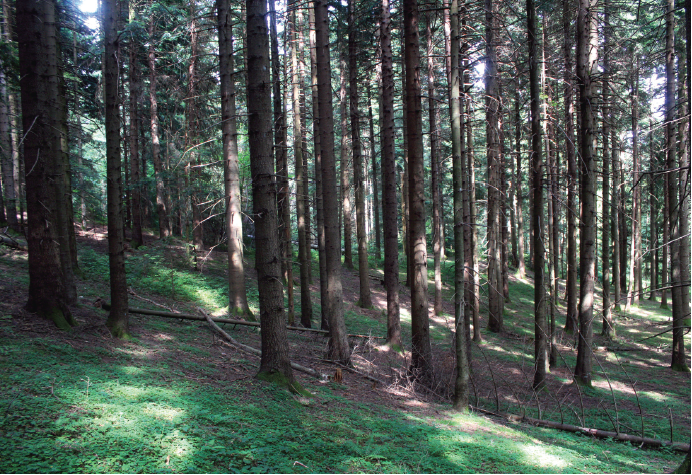Analysis of the association Galio rotundifolii-Abietetum albae Wraber (1955) 1959 on Manjača Mt (NW Bosnia and Herzegovina)
DOI:
https://doi.org/10.7251/GSF2232004KKeywords:
Abies alba, Braun-Blanquet approach, ecological indices, forest communities, geoelements, vegetationAbstract
This research aimed to study phytocoenological characteristics of a fir-dominated community on silicate substrate at the locality of Sitnica on Manjača Mt, northwestern Bosnia and Herzegovina. This community originated from artificially forested mixed stands of fir and spruce planted in the habitat of the mountain Dinaric fir-beech forest, over a hundred years ago. With regular selective cuttings and natural regeneration, the structure shifted from even-aged to uneven-aged. In total, 18 phytocoenological relevés were made using the Braun-Blanquet method during the vegetation seasons of 2021 and 2022. Relevés were stored in Turboveg database. Ecological factors were calculated based on Ellenberg bioindicator values. Species composition was analyzed in terms of life form, geoelements and chorotypes. Our analysis indicates that collected relevés can be classified as the association Galio rotundifolii- Abietetum albae belonging to the alliance Fagion sylvaticae.

Downloads
Published
Issue
Section
License
Copyright (c) 2022 Biljana Kuridža, Dragan Koljanin, Jugoslav Brujić

This work is licensed under a Creative Commons Attribution 4.0 International License.